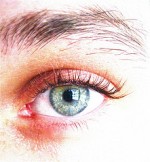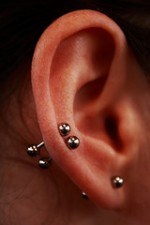Eyeball Movement as a Means of Identifying People
 An Israeli company called ID-U Biometrics thinks that the patterns of eyeball movement are unique to each individual, and are therefore a definitive means of identifying people:
An Israeli company called ID-U Biometrics thinks that the patterns of eyeball movement are unique to each individual, and are therefore a definitive means of identifying people:In ID-U Biometrics’ system, the user has to watch a moving object onscreen, while the camera observes the motion of their eyes. Since the way our eyes move is based on a combination of factors –such as anatomy, physiology, behavioral characteristics, eye structure–it’s a signature that simply can’t be duplicated or forged, according to its developers.[...]
This approach differs radically from eye-related biometrics we’ve written about previously, such as iris scanning. Iris scanning systems rely on matching the image of your iris structure with a stored pattern of your iris. In contrast, the pattern the ID-U technology is based on consists of dynamic movements made by your eyes as they track a target, something that cannot be controlled or learned. “Most of the eye movement components are involuntary, and we are not aware of them at all,” says Palti-Wasserman.
Before it was the eye it was the ear ...
Ear Scanning as a Means of Identifying People
 Mark Nixon, a professor at the University of Southampton (UK), believes that the unique shape of each person’s ears may provide a way of identifying dangerous people in airport security processes:
Mark Nixon, a professor at the University of Southampton (UK), believes that the unique shape of each person’s ears may provide a way of identifying dangerous people in airport security processes:Professor Nixon and his team tested 252 images of different ears and found the system was able to match each ear to a separate image held in its database with 99 per cent accuracy.[...]
“Fingerprints are one of the best ways we have of identifying an individual at the moment,” said Professor Nixon. “But on some people, even they are not so effective. Bakers and brick layers tend not to have obvious fingerprints as the distinctive whirls rub off.
“It is harder to do that with your ears, but there is one thing that can get in the way of the ears and that is hair. In reality, I expect there won’t be a single approach, but in fact a combination of different biometrics that can be taken simultaneously to identify an individual.”

No comments:
Post a Comment